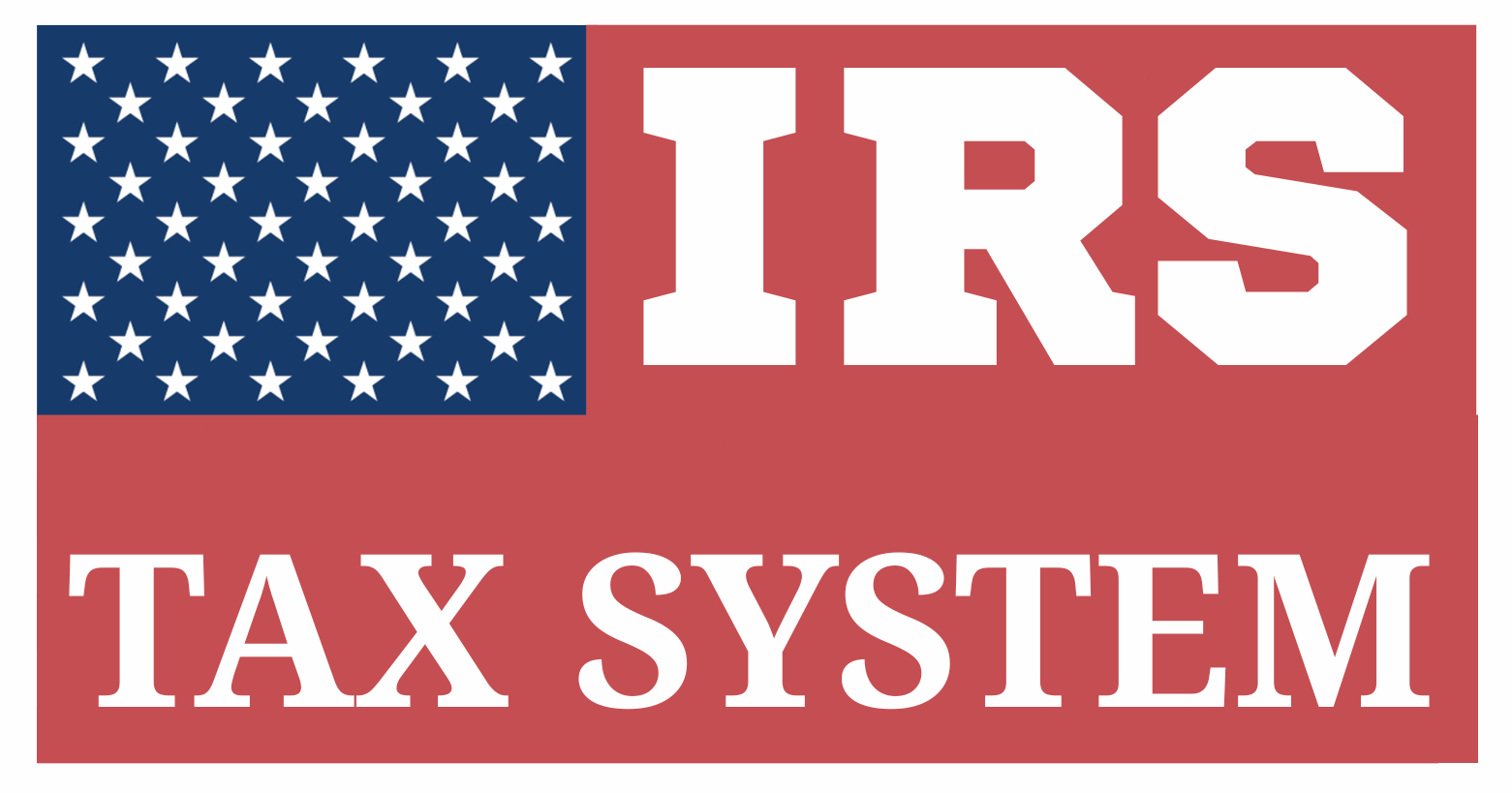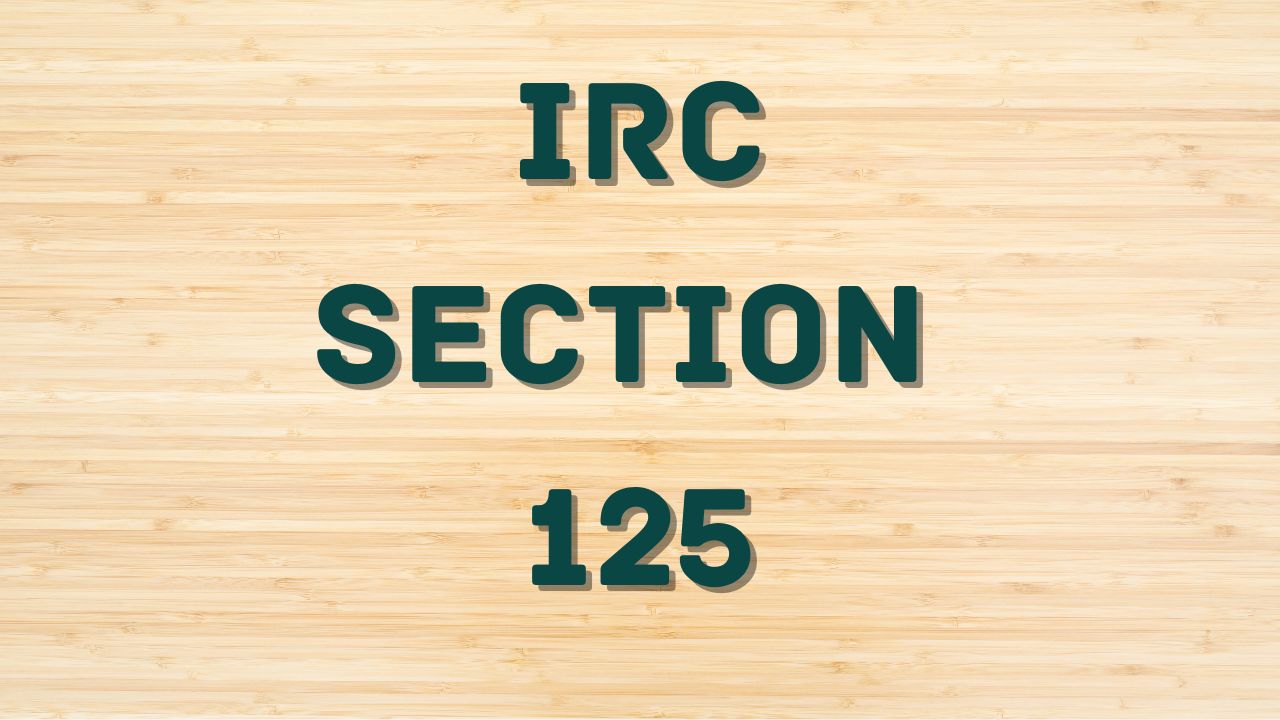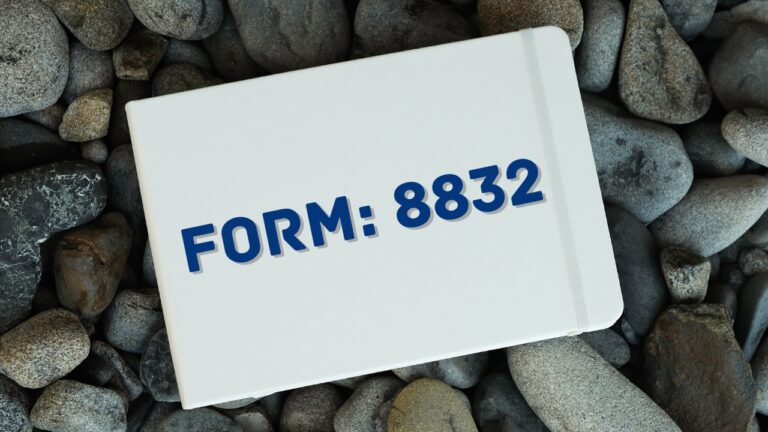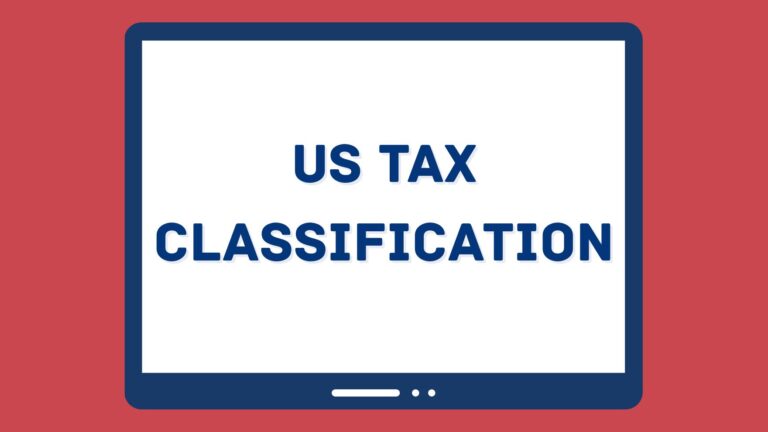IRC Section 125: Proven Guide
Table of Contents
IRC Section 125 and Its Treatment Under New York State Law
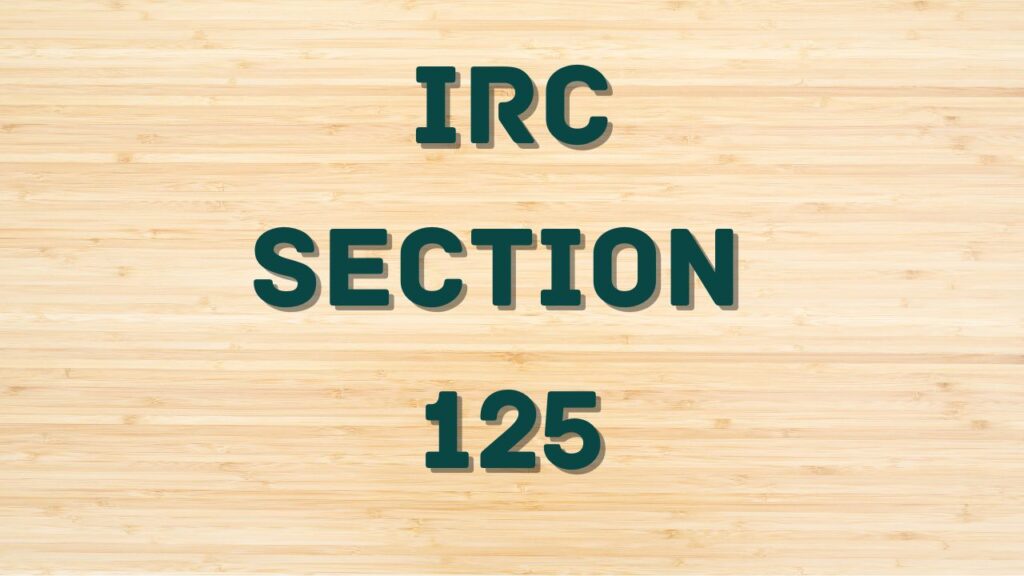
IRC Section 125 governs what are commonly known as Cafeteria Plans or Flexible Benefit Plans. These plans allow employees to choose between receiving cash compensation or selecting from a menu of nontaxable fringe benefits — such as:
- Pre-tax health insurance premiums
- Pre-tax reimbursement accounts used to cover eligible healthcare or dependent care expenses.
- Health Savings Account (HSA) contributions (if structured through a cafeteria plan)
- Group life insurance
- Dental and vision coverage
These benefits are excluded from federal taxable income if the cafeteria plan meets IRS requirements.
New York State’s General Treatment of IRC §125 Plans
1. Conformity with Federal Tax Code
New York State generally conforms to the federal tax treatment of Section 125 plans for personal income tax purposes. This means:
- Employee contributions to qualified benefits under a Section 125 plan are excluded from gross income when calculating New York State income tax.
- There is no requirement to add these amounts back on the New York State tax return (Form IT-201 or IT-203), assuming the plan complies with IRC §125 requirements.
Result: For most taxpayers, New York State taxable income equals federal taxable income with respect to cafeteria plan contributions.
2. Applicable Forms for State Tax Filing
- Form IT-201 (Resident Income Tax Return)
- Form IT-203 (Nonresident/Part-Year Resident Return)
These forms carry over federal Adjusted Gross Income (AGI), which already reflects cafeteria plan exclusions.
New York City & Yonkers: Local Add-Back of IRC §125 Contributions
While New York State recognizes the tax-free nature of IRC §125 benefits, New York City and Yonkers have different rules when it comes to local personal income taxes.
1. Add-Back Requirement
- NYC and Yonkers do not allow pre-tax exclusion for Section 125 plan contributions.
- This means the value of pre-tax benefits is added back to wages for purposes of calculating local income taxes.
Example:
| Description | Amount |
| Federal & NYS Wages | $50,000 |
| IRC §125 Contribution (e.g., Health Premiums) | $3,000 |
| NYC/Yonkers Taxable Wages | $53,000 |
2. How to Report This Add-Back
On Form IT-201, the taxpayer must include the IRC §125 contributions in:
- Line 2 of the New York City/Yonkers additions worksheet
- This adjustment is necessary only if the taxpayer is a resident of NYC or Yonkers
Note: The amount added back typically comes from Box 14 of Form W-2, where employers often report Section 125 plan contributions.
Employer Reporting Responsibilities
A. Form W-2 Reporting
- Box 1: Federal wages (reduced by pre-tax contributions)
- Box 14 (or separate statement): Often used to list IRC §125 contribution amounts for transparency
- Employers must ensure accurate reporting for:
- Federal income tax
- NYS income tax (conforms)
- Local NYC/Yonkers withholding (requires full wage inclusion)
B. Payroll Processing
Employers should ensure that:
- Payroll systems are configured to correctly exclude Section 125 contributions from federal and NYS wages
- Payroll includes these amounts for NYC and Yonkers withholding and W-2 reporting purposes
Understanding §125 Plan Adjustments for Residents of NYC and Yonkers
While the federal government and New York State allow pre-tax exclusions for contributions to cafeteria plans under IRC §125, New York City and Yonkers apply a distinct tax policy that disallows these pre-tax benefits for local income tax purposes. This difference creates an important tax consideration for employees who live in these jurisdictions.
How Federal and NYS Treatment Differs from NYC/Yonkers
| Taxing Authority | IRC §125 Contributions (e.g., Health, Dental, FSA) |
| Federal | Excluded from taxable income |
| New York State | Excluded (conforms to federal treatment) |
| NYC/Yonkers | Included in taxable income |
Why NYC and Yonkers Require Add-Backs
New York City and Yonkers apply local tax rules that do not recognize the federal and state pre-tax treatment of IRC §125 plan contributions. That means any amount contributed to pre-tax benefit plans (e.g., health insurance premiums or FSA accounts) under a cafeteria plan must be added back to local taxable wages for the purpose of calculating NYC or Yonkers personal income taxes.
Reporting the Add-Back: Where and How?
For NYC or Yonkers residents:
- This add-back adjustment must be made when completing Form IT-201 (New York Resident Income Tax Return) or Form IT-203 (Nonresident/Part-Year Resident).
- On the New York City and Yonkers additions worksheet (attached to IT-201 or IT-203), taxpayers must include the value of IRC §125 contributions.
- Employers often report IRC §125 contributions in Box 14 of Form W-2, but placement may differ depending on internal payroll practices.
Example Scenario
Let’s say you earn a base salary of $60,000 in New York City and contribute $4,000 to your health insurance premiums through your employer’s Section 125 plan:
- Federal and NYS taxable wages: $60,000 – $4,000 = $56,000
- NYC taxable wages: Must add back $4,000 → $60,000
So, although your federal and NYS tax liability is calculated on $56,000, your NYC income tax is based on the full $60,000.
Employer Responsibilities
- Employers must withhold NYC and Yonkers tax on the gross income, not the reduced (pre-tax) income.
- Payroll systems must be programmed to recognize the difference in treatment between NYS and NYC/Yonkers for accurate reporting and withholding.
Important Notes
- This only affects residents of NYC and Yonkers. Nonresidents are not subject to these local income taxes and do not need to make this add-back.
- Failure to include IRC §125 contributions in local taxable income may result in underpayment penalties or audits.
W-2 Reporting and Employer Compliance for IRC §125 Plans
Employers who offer cafeteria plans under IRC §125 must comply with strict wage reporting and tax withholding rules across multiple jurisdictions—including federal, state, and local levels. This is especially critical for employers in New York, where New York City and Yonkers tax laws differ from federal and New York State treatment.
What Is Reported on Form W-2?
Form W-2 (Wage and Tax Statement) is the annual tax form that employers must issue to each employee, showing total wages paid and taxes withheld. When it comes to Section 125 plan contributions (e.g., pre-tax health insurance, dental, vision, FSA, dependent care), reporting must reflect different treatments for various tax authorities.
Breakdown of Key W-2 Boxes for IRC §125:
| Box | Contents | Treatment of §125 Contributions |
| Box 1 | Wages, tips, other compensation (for federal income tax) | Reduced by §125 contributions |
| Box 3 & 5 | Wages for Social Security and Medicare | Not reduced (except for certain FSA contributions) |
| Box 14 | Informational box (used for codes like “125,” “Pre-tax Health,” etc.) | May list §125 deduction amounts, especially useful for state/local add-back |
Federal Compliance
Under federal tax law:
- Contributions made under a §125 cafeteria plan are not included in federal taxable income.
- These amounts reduce Box 1 wages, lowering federal taxable income.
- However, Social Security and Medicare wages (Boxes 3 & 5) still include §125 contributions—except in certain cases (e.g., dependent care).
New York State Compliance
- New York State conforms to federal tax treatment.
- Thus, IRC §125 contributions are also excluded from NYS taxable wages.
- No separate add-back or reporting is required at the state level.
New York City & Yonkers: Special Rules
- NYC and Yonkers do not conform to IRC §125 for local tax purposes.
- Employers must still withhold local income taxes based on gross wages before §125 reductions.
- While Box 1 shows reduced wages due to pre-tax deductions, employers must still comply with all federal and state reporting requirements:
- Accurately track and report §125 contributions
- Help employees add back contributions when filing IT-201 or IT-203
Best Practice: Employers typically use Box 14 to report §125 plan contributions so employees can easily identify the add-back amount for NYC/Yonkers tax compliance.
Example W-2 Scenario for a NYC Employee
An employee earns a salary of $70,000 and contributes $5,000 to a Section 125 health plan.
| Box | W-2 Entry |
| Box 1 | $65,000 (reduced for pre-tax plan) |
| Box 3 & 5 | $70,000 (full wages for FICA) |
| Box 14 | “Pre-tax Health: $5,000” (for add-back purposes) |
NYC Add-Back: Employee must include the $5,000 in local taxable income when filing their NYC tax return (IT-201).
Employer Compliance Requirements
- Payroll Setup
Employers must configure payroll systems to:- Apply §125 reductions for federal and NYS taxes
- Maintain gross wage records for NYC/Yonkers
- Accurate Withholding
- Ensure federal and NYS withholding are applied to adjusted wages
- Ensure NYC/Yonkers taxes are withheld from unadjusted wages
- W-2 Preparation
- Report adjusted wages in Box 1
- Include §125 contribution details in Box 14 (optional but recommended)
- Documentation & Transparency
- Maintain records of employee elections and deductions
- Provide clear breakdowns in year-end pay stubs or W-2 summaries
Penalties for Non-Compliance
Failure to properly account for IRC §125 contributions or withhold correct taxes can result in:
- IRS penalties for incorrect W-2 filings
- State/local tax audits
- Underpayment interest or fines imposed on either employer or employee
Legal and Compliance Considerations for IRC §125 Plans
IRC §125 plans, often referred to as cafeteria plans, allow employees to pay for certain benefits with pre-tax dollars, such as health insurance, dependent care, and flexible spending accounts (FSAs). While they offer substantial tax savings, these plans are governed by complex legal and regulatory requirements. Employers must ensure ongoing compliance at federal, state, and local levels to avoid penalties, audits, or disqualification of the plan.
1. Federal Legal Framework: IRC §125
Key Federal Requirements:
- The employer is required to establish the cafeteria plan through a written document that is officially adopted and maintained.
- Employees must make elections before the beginning of the plan year unless there’s a qualifying life event (e.g., marriage, birth).
- Elections are irrevocable during the plan year unless a permitted change occurs.
- The plan must provide benefits on a consistent basis and comply with non-discrimination rules, ensuring that highly compensated or key employees are not given preferential treatment.
IRS Compliance Responsibilities:
- Ensure proper W-2 reporting (Box 1 reductions, Box 3/5 accuracy).
- Maintain plan documents, employee elections, and change forms.
- Conduct annual nondiscrimination testing (for dependent care FSAs, health plans, etc.).
- File any required informational forms (e.g., Form 5500 for large benefit plans).
2. State and Local Compliance – Focus on New York
New York State:
- New York conforms to federal tax treatment of §125 plans.
- No add-back of §125 contributions is required on NYS income tax returns.
- Employers must still accurately report wages and withhold taxes at the state level using adjusted wages.
New York City and Yonkers:
- NYC and Yonkers do not follow federal IRC §125 rules for local personal income tax purposes.
- Employees must add back §125 contributions to their NYC/Yonkers income when filing.
- Employers should support compliance by:
- Accurately tracking §125 deductions.
- Reporting them in Box 14 of the W-2 (labeled “Pre-tax Health,” “FSA,” or “125 Plan”).
- Educating employees about the add-back requirement for NYC/Yonkers IT-201 returns.
3. Department of Labor (DOL) Compliance
- If the cafeteria plan includes ERISA-covered benefits (like group health), employers must also meet ERISA disclosure and fiduciary standards.
- If a cafeteria plan has more than 100 participants, the employer may be required to file Form 5500 for annual reporting and compliance.
- Required employee communications include:
- Summary Plan Description (SPD)
- Summary of Benefits and Coverage (SBC)
- Notices of special enrollment rights, COBRA, HIPAA, etc.
4. Data Security and Privacy
- Employers must safeguard employee information, particularly when administering health and FSA benefits.
- HIPAA rules may apply for health-related benefits offered under the plan.
- Electronic elections or plan changes must be securely stored and evidenced in compliance with IRS audit standards.
5. Consequences of Non-Compliance
Failing to meet legal and compliance obligations under IRC §125 and related laws can lead to:
| Risk | Impact |
| Disqualification of Plan | All employee contributions become taxable income retroactively. |
| IRS Penalties | Fines for improper W-2 reporting or failure to maintain plan documentation. |
| State/Local Tax Issues | Liability for unpaid NYC/Yonkers taxes if §125 income not correctly added back. |
| Employee Lawsuits | Claims for incorrect withholding, missed benefits, or discrimination. |
| DOL Enforcement | Civil penalties for failure to meet ERISA or COBRA obligations. |
How IRC §125 Contributions Are Treated for Federal vs. NY State
1. Taxability:
Under federal law, contributions made under IRC §125 cafeteria plans (e.g., for health insurance, dependent care FSA, or HSA) are excluded from:
- Federal income tax
- Social Security tax (FICA)
- Medicare tax
- FUTA (Federal Unemployment Tax Act), in most cases
Reporting Requirements:
- Form W-2, Box 1: Excludes IRC §125 contributions from gross wages.
- Form W-2, Box 3 and 5: Depending on the benefit, may also exclude contributions from Social Security and Medicare wages.
- Box 14 may be used by employers to optionally display §125 plan contributions for informational and recordkeeping purposes.
Employer Responsibility:
- Must adopt a formal written plan.
- Must administer nondiscrimination testing under IRC §125.
- Must withhold, report, and deposit taxes appropriately per the federal guidelines.
2. New York State Treatment of IRC §125 Plans
Conformity with Federal Law:
New York State follows federal tax rules in excluding IRC §125 contributions from state taxable income. This means:
- Contributions are not added back when calculating New York State taxable income.
- The wages on federal and state tax returns are identical, assuming only §125 adjustments are made.
W-2 Reporting:
- The wage amount reported on Form W-2 for New York State purposes generally matches the federal Box 1 figure.
- No separate line-item or add-back adjustment is required on Form IT-201 (NYS resident return).
Employer Responsibility:
- Maintain records that show §125 deductions are in compliance with state conformity.
- No separate NY-specific calculation is needed for §125 wage adjustments.
3. New York City and Yonkers Tax Treatment
Local Add-Back Requirement:
Although NYS conforms to federal rules, New York City and Yonkers do not. Residents of these jurisdictions must:
- Add back IRC §125 pre-tax contributions to their NYC/Yonkers taxable income.
Affected Employees:
- NYC/Yonkers residents who participate in pre-tax benefit plans under IRC §125 (e.g., health insurance, FSAs).
- Local tax is calculated as if those contributions were never deducted.
Reporting:
- The add-back must be reported on Worksheet A (IT-201) or equivalent.
- Employees may use information in Box 14 of Form W-2 to compute the add-back amount.
Employer Guidance:
- Including pre-tax IRC §125 contributions in Box 14 of Form W-2 is highly encouraged to promote transparency and assist with tax reporting.
- Employers should notify NYC and Yonkers employees that local income tax rules differ from federal/NYS rules.
4. W-2 Reporting and Employer Compliance
W-2 Box Overview:
- Box 1: Federal and NYS taxable wages (post-§125 deductions)
- Boxes 3 and 5 report wages subject to Social Security and Medicare taxes, which may not exclude §125 contributions unless the specific benefit is exempt
- Box 14: Used to list IRC §125 pre-tax amounts (not required, but useful for NYC/Yonkers)
Employer Must:
- Maintain accurate payroll systems that handle §125 deductions properly.
- Document plan eligibility and employee participation in case of IRS or NYS audit.
- Reconcile differences for local income tax reporting for affected employees.
5. Legal and Compliance Considerations
Federal Level:
- Must comply with IRC §125 plan requirements, including written plan document, eligibility rules, and nondiscrimination testing.
- Administrative mistakes can disqualify the entire plan, causing participants to lose their pre-tax benefit eligibility.
NY State Level:
- Follow federal guidelines. No additional state-level filings or disclosures for §125 plans are required.
NYC/Yonkers Level:
- Non-conforming jurisdictions. Failure to inform employees about the add-back can result in filing errors and underpaid local tax liabilities.
Conclusion
While New York State follows federal rules for IRC §125 benefits in most cases, New York City and Yonkers impose local taxes on those benefits, treating them as taxable wages. This divergence primarily affects employees living or working in those localities and should be reflected in their state and local income tax filings.
Frequently Asked Questions (FAQs)
What is an IRC §125 cafeteria plan?
A §125 plan, also known as a cafeteria plan, allows employees to pay for certain benefits—such as health insurance, dependent care, or HSAs—on a pre-tax basis, reducing their federal and state taxable income.
Does New York State follow federal rules for §125 plans?
Yes. New York State conforms to federal tax treatment. This means §125 contributions are not added back to state income and are excluded from New York State taxable wages.
Are §125 contributions taxable in New York City or Yonkers?
Yes. NYC and Yonkers do not conform to federal or NYS tax treatment for §125 contributions. Employees living in these jurisdictions must add back §125 pre-tax deductions when calculating local taxable income.
Is there a separate NY form for reporting §125 income add-backs?
Refer to Box 14 of your W-2 (if the employer includes §125 amounts there). If not listed, check your payroll records to determine total pre-tax benefits under a §125 plan. This amount is then added back to your NYC/Yonkers income on the NY State return.
Do all types of pre-tax benefits fall under §125?
Not all. Only those benefits listed under IRC §125 qualify—e.g., health insurance, dental/vision insurance, dependent care FSAs, and group-term life insurance (up to a limit).
Are employers required to show §125 contributions separately on W-2s?
Not legally, but it is strongly encouraged—especially for NYC/Yonkers employees—so that workers can determine correct local taxable income.
Does this affect my Social Security or Medicare wages?
Not legally, but it is strongly encouraged—especially for NYC/Yonkers employees—so that workers can determine correct local taxable income.
What happens if I don’t add back §125 amounts for NYC/Yonkers taxes?
Failure to add back §125 deductions can result in underpaid local income taxes, leading to penalties and interest. Always review your W-2 and use Worksheet A if you reside in these cities.
Can employers deduct §125 benefits on their taxes?
Yes. Employers can typically deduct the cost of providing benefits, including matching contributions or plan administration costs, subject to IRS rules.
